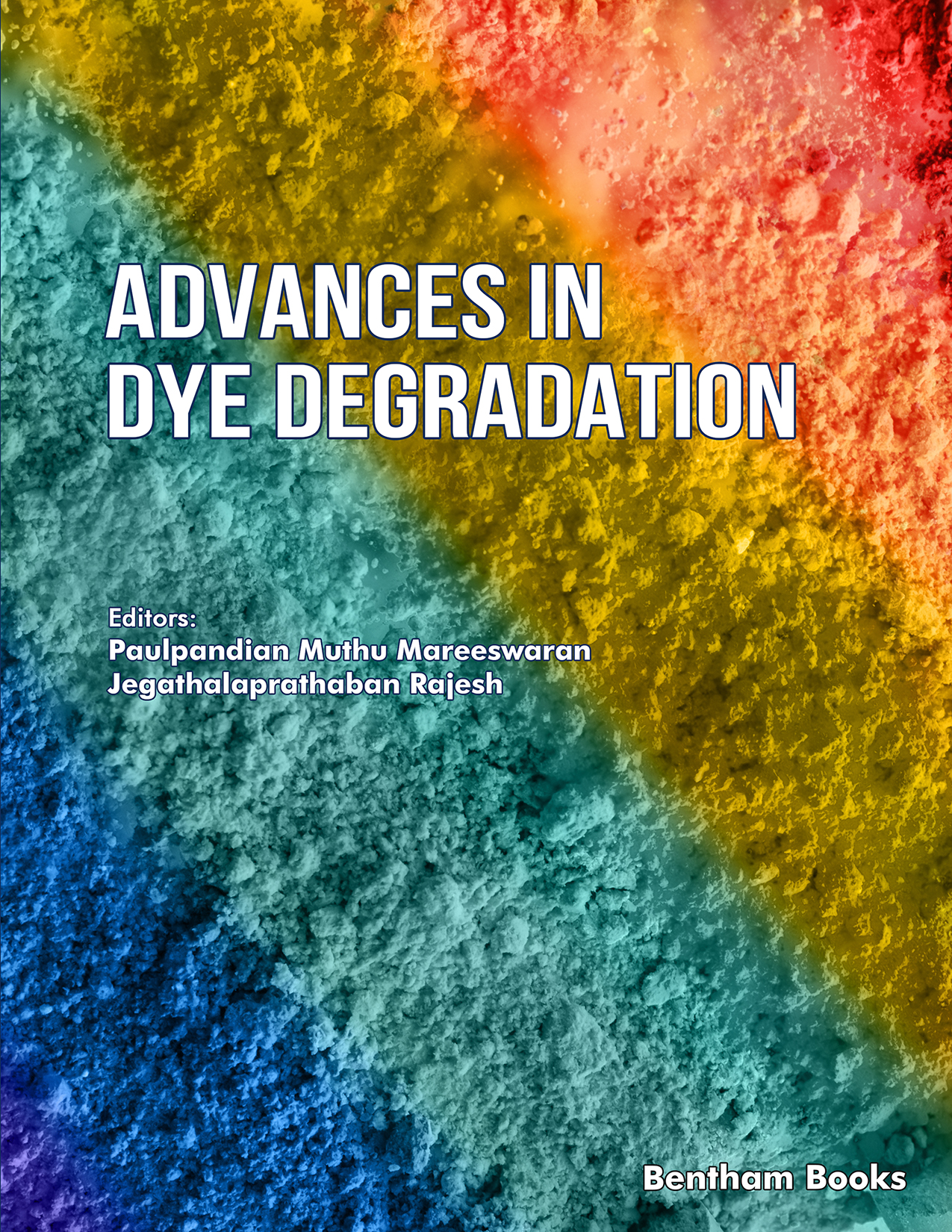Preface
The environmental and economic perspectives create a need for dye degradation techniques. The fundamentals and importance of the dye degradation process were covered in “Advances in Dye Degradation,” volume I. In this volume, we have covered advanced oxidation techniques for degrading dyes. The Fenton process, a radical reaction, is used in Chapter 1 to degrade dyes. Radical production can break the dye materials into a safe byproduct when iron is present. The Fenton process can be combined with other processes, such as photochemical and electrochemical ones because it can be adjusted to produce a chain reaction that produces radicals. As a result, the Fenton process is among the most effective methods for degrading dyes.
The application of metal-organic frameworks to dye degradation is covered in Chapter 2. Metal-organic frameworks are porous materials whose synthetic pore modification allows for tuning the selectivity of these compounds. One of the key elements in the field of dye degradation is the application of electrocatalytic or photocatalytic degradation of these materials.
The photocatalytic materials active in the visible light and near-infrared regions of the electromagnetic spectrum are covered in Chapter 3. The band gap is the crucial factor for a successful photocatalyst. The ultimate goal of photocatalysis will be the utilization of solar light. As a result, the materials must absorb the entire spectrum of solar light's wavelengths. Nonetheless, there are several benefits to using NIR and the red region. This chapter provides a detailed discussion of the NIR active materials.
The photocatalytic degradation of transition metal dichalcogenides (TMDs) is covered in Chapter 4. The back combination of electrons and holes is the main element that lowers the degradation reaction's efficiency. Chalcogenides can, therefore, be used to create hybrid composites that inhibit the back combination process and yield beneficial outcomes in the degradation of dyes. The mechanism underlying each of these dye degradation processes is covered in this chapter.
The synthesis of photocatalysts for dye degradation is covered in Chapter 5. This chapter discusses the green synthetic approach of photocatalytic materials and their efficiency towards dye degradation since the production of photocatalysts should be benign. The use of metal oxide nanoparticles in dye degradation is covered in Chapter 6. The latest developments and trends regarding metal oxide nanoparticles and dye degradation are covered in this chapter.
The photocatalytic dye degradation employing graphene oxide composite materials is covered in Chapter 7. Effective conductive materials, such as graphene oxide, can control their electron injection by mixing it with materials that receive electron injection and synthetic modification to create composites. Because of these materials' high reusability, this chapter discusses their recent advantages. We hope that this volume will be helpful to both those working in the field and students who are about to enter it, as it starts with basic methods and provides information about advanced techniques.
Paulpandian Muthu Mareeswaran
Department of Chemistry
College of Engineering
Anna University, Chennai-600025
Tamil Nadu, India
&
Jegathalapradhaban Rajesh
Department of Chemistry
Saveetha School of Engineering
Institute of Medical and Technical Science
Saveetha University, Chennai-602105
Tamil Nadu, India

